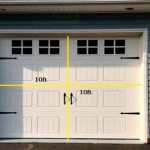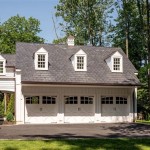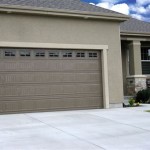Build Home Gym In Garage: DIY Ideas and Plans
Transforming a garage into a functional home gym is a popular and effective way to prioritize physical fitness without the expense and commitment of a commercial gym membership. A garage provides ample space, privacy, and the flexibility to customize the workout environment according to individual needs and preferences. Converting a garage into a home gym requires careful planning, preparation, and execution. This article outlines practical DIY ideas and plans to guide individuals through the process of building a comprehensive and effective home gym within their garage.
Planning and Preparation
Prior to commencing any physical modifications, a thorough assessment of the existing garage structure is crucial. This includes evaluating the available square footage, the condition of the flooring and walls, the adequacy of lighting and ventilation, and the presence of electrical outlets. Accurate measurements of the garage space will inform equipment selection and placement strategies. It is also important to consider local building codes and regulations, particularly regarding electrical work or structural modifications.
Budget allocation is a critical component of the planning phase. Establishing a realistic budget will dictate the type and quantity of equipment that can be purchased, as well as the scope of any necessary renovations. It is prudent to prioritize essential equipment, such as a weight rack, barbell, and adjustable bench, and then gradually add supplementary items as budget allows.
Determining the workout style and fitness goals will significantly influence the equipment and layout choices. Individuals primarily interested in weightlifting will require different equipment and space configurations compared to those focused on cardio or bodyweight training. Defining fitness objectives early in the planning process ensures that the final gym design aligns with individual needs and promotes consistent use.
Once the foundational planning is complete, attention should be directed towards decluttering and cleaning the garage. Removing all unnecessary items and thoroughly cleaning the space is essential. This includes sweeping, washing the floor, and dusting walls and rafters. Creating a blank canvas simplifies the renovation process and allows for a clear vision of the finished gym.
Flooring, Walls, and Ventilation
Garage floors are typically concrete, which can be cold, hard, and uncomfortable for exercising. Addressing the flooring is a vital step in creating a functional and safe home gym. Several flooring options are suitable for garage gyms, each with its own advantages and disadvantages. Interlocking rubber tiles are a popular choice due to their durability, shock absorption, and ease of installation. Rolled rubber flooring offers a seamless surface and is ideal for covering large areas. Foam tiles are a more affordable option, but they may not be as durable as rubber and are susceptible to tearing or indentation under heavy weight.
The walls of a garage often require attention to improve their appearance and functionality. Painting the walls with a light-colored, moisture-resistant paint can brighten the space and protect against humidity. Drywalling the walls adds insulation and creates a more finished look, although this is a more involved process. Installing mirrors along at least one wall is beneficial for monitoring form and technique during workouts. Pegboards or slatwalls provide versatile storage solutions for organizing small equipment, such as resistance bands, jump ropes, and foam rollers.
Adequate ventilation is essential for maintaining a comfortable and healthy workout environment. Garages are often poorly ventilated, which can lead to the buildup of heat, moisture, and unpleasant odors. Installing an exhaust fan or a window fan can significantly improve air circulation. If the garage lacks windows, consider installing a dedicated ventilation system to ensure proper airflow. In colder climates, a space heater may be necessary to maintain a comfortable temperature during the winter months.
Equipment Selection and Layout
Selecting the right equipment is crucial for creating an effective home gym. The specific equipment required will depend on individual fitness goals and workout preferences. A basic home gym setup should include a weight rack, barbell, adjustable bench, and a set of weight plates. This combination allows for a wide range of exercises, including squats, bench press, overhead press, and rows.
For individuals interested in cardiovascular training, options include a treadmill, elliptical machine, stationary bike, or rowing machine. The choice will depend on available space and personal preferences. A jump rope is a compact and affordable alternative for cardio training. Resistance bands are a versatile and inexpensive tool for adding resistance to various exercises. Kettlebells and dumbbells are useful for developing strength and power.
Proper equipment placement is essential for optimizing space and ensuring safety. The weight rack should be placed away from walls and other obstructions to allow for unrestricted movement. Sufficient space should be allocated around cardio equipment to prevent collisions. Dumbbells and kettlebells should be stored on a rack or shelf to prevent tripping hazards. Mirrors should be positioned to provide a clear view of the exercise area without creating glare or reflections that could be distracting.
Incorporating a dedicated stretching and mobility area is important for injury prevention and recovery. This area should be equipped with a yoga mat, foam roller, and resistance bands. Adequate space should be allocated for performing dynamic stretches and mobility exercises before and after workouts. Consider adding a small sound system to the gym to allow for listening to music or podcasts during workouts.
Electrical and Lighting Considerations
Garages often have limited electrical outlets, which may not be sufficient for powering all of the equipment in a home gym. Assessing the current electrical capacity and adding additional outlets is often necessary. It is recommended to hire a qualified electrician to perform any electrical work, ensuring that it is done safely and in accordance with local building codes. Consider installing dedicated circuits for high-power equipment, such as treadmills and space heaters, to prevent overloading the electrical system. Ground fault circuit interrupter (GFCI) outlets should be used in areas where moisture is present.
Proper lighting is essential for creating a safe and motivating workout environment. Garages are often dimly lit, which can make it difficult to see and can create a sense of claustrophobia. Improving the lighting can significantly enhance the gym's overall appeal and functionality. LED shop lights are a popular and affordable option for providing bright, even illumination. Track lighting allows for directing light to specific areas of the gym. Consider using a combination of ambient and task lighting to create a well-lit and visually appealing space. Natural light is also highly beneficial, so if possible, consider adding or enlarging windows.
Storage Solutions and Organization
Maintaining a clean and organized gym is essential for safety and motivation. Implementing effective storage solutions will help to keep equipment organized and prevent clutter. Wall-mounted shelves are a versatile option for storing small equipment, such as resistance bands, jump ropes, and foam rollers. A dedicated weight plate rack will keep weight plates organized and easily accessible. Dumbbell racks and kettlebell racks are essential for storing these items safely and efficiently. Pegboards and slatwalls offer customizable storage solutions for a wide range of equipment.
Consider repurposing old furniture, such as bookshelves or cabinets, for additional storage. Clear plastic bins are useful for storing smaller items, such as workout gloves, towels, and cleaning supplies. Labeling all storage containers will help to keep the gym organized and make it easier to find what is needed. Regularly decluttering and organizing the gym will prevent the buildup of unnecessary items and maintain a clean and functional workout space.
Wall-mounted hooks can be used to hang resistance bands, jump ropes, and workout towels. A medicine ball rack or storage container will keep medicine balls organized and prevent them from rolling around. Designating a specific area for workout clothes and shoes will prevent clutter and maintain a neat appearance. Implementing these storage solutions will contribute to a more efficient, enjoyable and safer workout experience.

Creative Diy Garage Gym Ideas To Maximize Your Space Trusscore

How To Build A Custom Half Garage Gym Morgan Taylor Homes

I Built My Dream Garage Home Gym

Our New Home Gym Separate Building In Backyard Nesting With Grace

20 Small Home Gym Ideas And Half Garage Gyms Motive8

How To Turn Your Garage Into A Fitness Room

Our New Home Gym Separate Building In Backyard Nesting With Grace

Creative Diy Garage Gym Ideas To Maximize Your Space Trusscore

How To Turn Your Garage Into A Fitness Room

7 Inspirational Garage Gym Ideas Designs Motive8
Related Posts








